I often cut across Rådhusplassen just to pop into Oslo City Hall for five quiet minutes with the murals. The brick towers look stern from the harbour, but inside you get colour, symbolism, and the room where the Nobel Peace Prize is awarded. For a richer stroll between landmarks, start StoryHunt’s Oslo audiowalk at Central Station and let it lead you here.
What is the story behind Oslo City Hall?
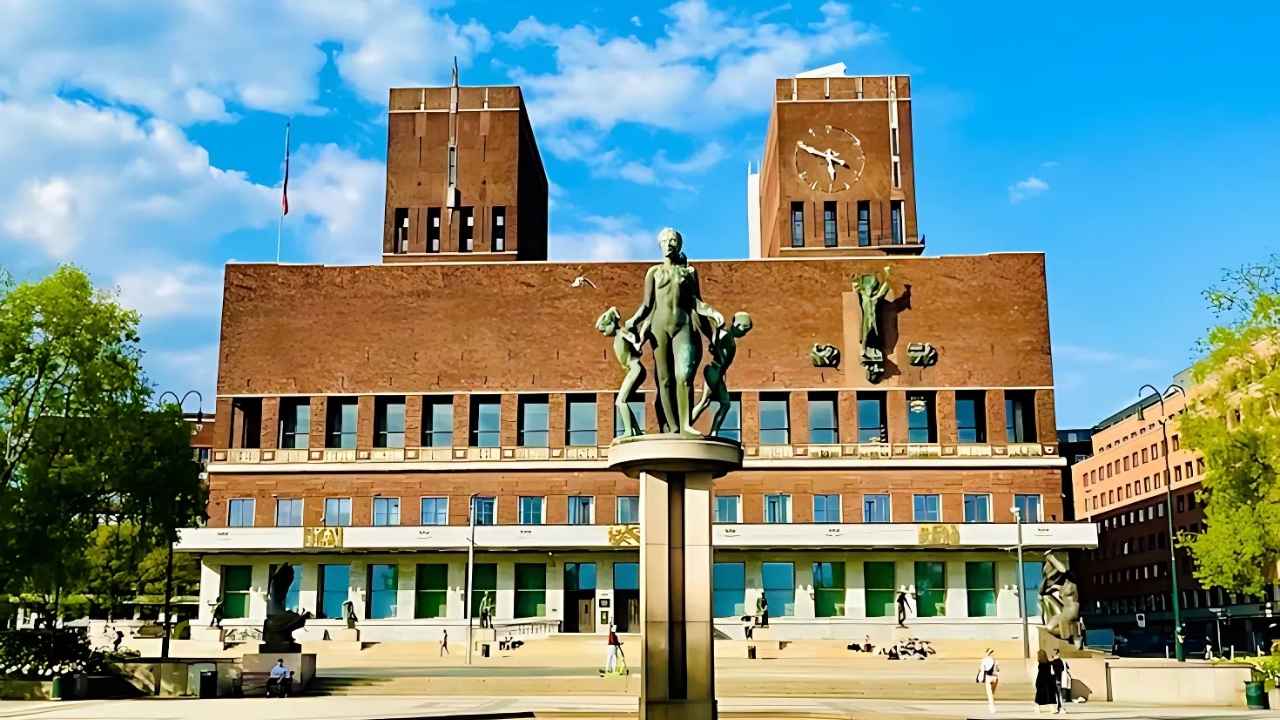
Oslo City Hall opened in 1950 after a long build that started in 1931, paused by war, then resumed. Architects Arnstein Arneberg and Magnus Poulsson designed the brick twin towers, practical on the outside, richly decorated within. The Main Hall hosts the Nobel Peace Prize ceremony each December. Step closer for carvings and tapestries that celebrate work, citizenship, and the city’s patron, St Hallvard.
- Architects: Arnstein Arneberg and Magnus Poulsson
- Opened: 1950, work began in 1931, delayed by World War II
- Function: municipal government, public art, major ceremonies
Explore these stops with context by queuing up StoryHunt’s Oslo audiowalk.
What do the murals in Oslo City Hall mean?
They map Norway’s identity. Henrik Sørensen’s Main Hall murals show history, harvests, and civic life, while Alf Rolfsen’s sequence reflects occupation and resistance during World War II. Look for St Hallvard with arrows and millstone, the city’s symbol of protection and justice. The message is clear: democracy is built by workers, families, and shared responsibility, not only politicians.
- Spot Sørensen’s luminous harvest scenes
- Find Rolfsen’s war and rebuilding narrative
- Seek St Hallvard in coats of arms and reliefs
Can you visit Oslo City Hall for free?
Yes, entry is free during posted opening hours, with security screening at the door. In summer, free guided tours are often offered, and exhibitions rotate in side halls. Access may close during official events, including the Nobel season. Photography is generally permitted, respectfully. I time visits before lunch when groups thin out and the Main Hall feels almost meditative.
- Free entry, tours in summer months
- Temporary closures for ceremonies, check signs
- Light bag screening at entrance
Why is Oslo so famous?
Oslo blends fjordfront modernism with deep history: the Opera House you can walk on, MUNCH museum, the Royal Palace, and islands you can reach by public ferry. It is also the annual host of the Nobel Peace Prize. The city’s sustainable mindset shows up in electric ferries, car-light streets, and easy transit. The compact centre rewards walking between big sights.
How long is the city hall in Oslo?
If you mean visiting time, plan 30 to 45 minutes for a self-guided look at the Main Hall, murals, and courtyards. A guided tour takes about 45 to 60 minutes, worth it if you want symbolism decoded. I budget a relaxed hour, then continue to Akershus Fortress or the waterfront. The building’s physical dimensions matter less than the stories on its walls.
Is Oslo the most expensive city in the world?
Oslo is pricey for dining and alcohol, but it is rarely ranked number one. Cities like Singapore, Zurich, or Hong Kong often top global cost indexes. The good news: many headline experiences are free, including City Hall, the Opera House roof, and the fortress grounds. Save your splurge for a harbour lunch, then keep moving on foot with StoryHunt’s sustainable route.
Does Oslo City Hall host the Nobel Peace Prize?
Yes, the Nobel Peace Prize award ceremony takes place in the Main Hall each year on 10 December. The roped-off layout you sometimes see is rehearsal setup. If you visit near that date, expect partial closures and extra security. Outside the season, the hall is open and wonderfully calm, so you can stand where laureates give their speeches and let the scale sink in.
How to get to Oslo City Hall
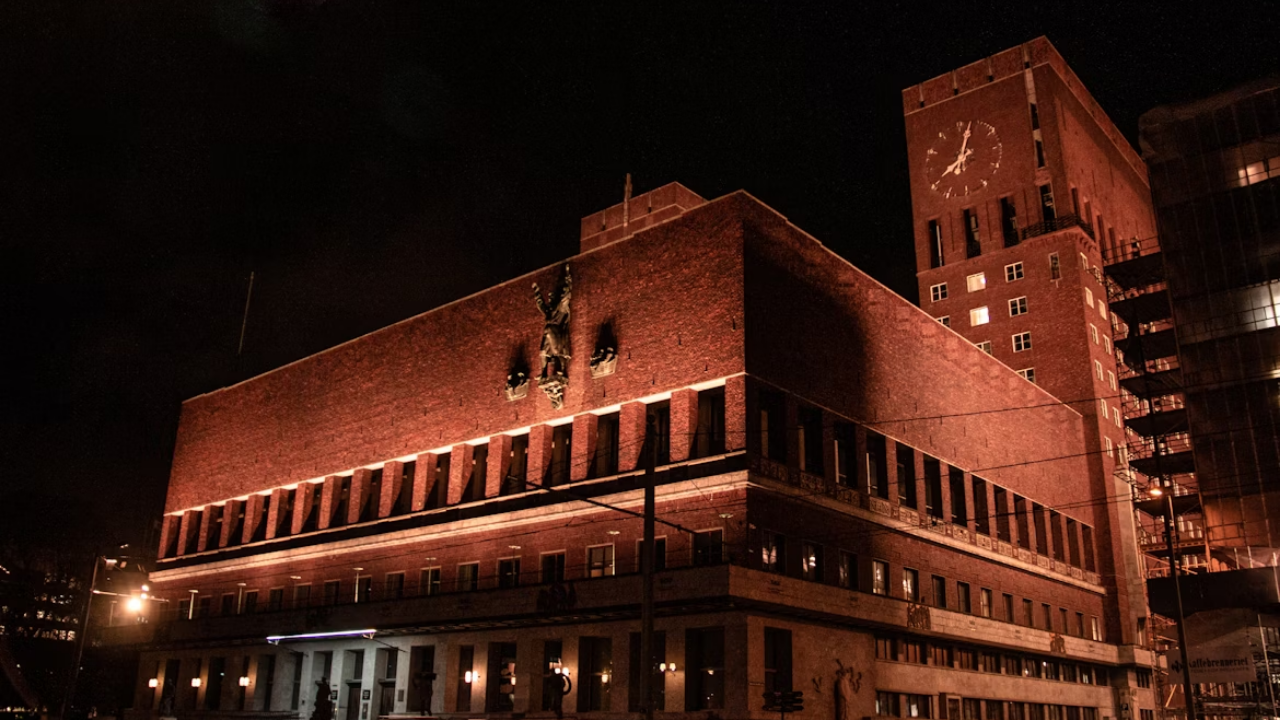
From Oslo Central Station, walk 15 to 20 minutes along Karl Johans gate toward the Parliament, then continue to Rådhusplassen by the harbor. Trams and buses stop at Rådhuset, and there is a ferry pier nearby for the islands. The building is signed Rådhus on maps. I prefer the waterfront approach, with the towers framing the fjord.
- Walk: Oslo S, Karl Johans gate, Stortinget, Rådhusplassen
- Tram: lines to Rådhuset stop
- Ferry: nearby Aker Brygge terminal
Make the walk a story, start the StoryHunt audiowalk at Oslo S.
Is it worth seeing Oslo City Hall?
Yes, especially if you enjoy art that explains a nation. The critique: the exterior can feel severe and the lighting is cooler on grey days, so photos are better in bright weather. Interiors are the real draw, and they are free. Combine City Hall with the Opera House and the fortress for a powerful civic trilogy using StoryHunt’s narrated path.
What else is nearby Oslo City Hall?
From here you are in reach of alle the main attractions in Oslo:
- The Opera House, climbable roof and harbor views
- Akershus Fortress, ramparts and royal history
- Stortinget, Norway’s Parliament on Karl Johans gate
- The Royal Palace, gardens and changing of the guard
Ready to explore with context and fewer screens, plug in and let StoryHunt guide your Oslo day.
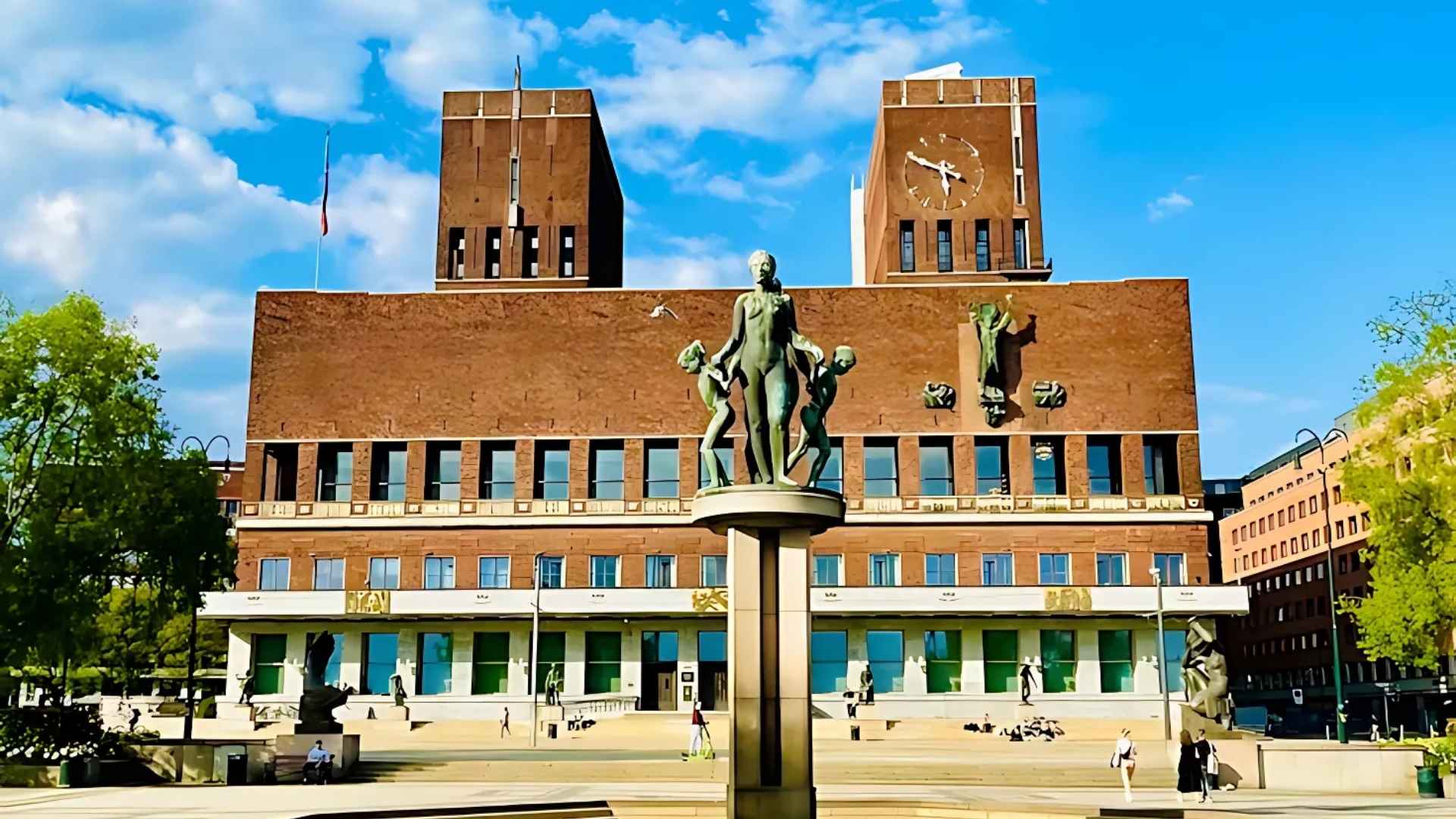
.webp)

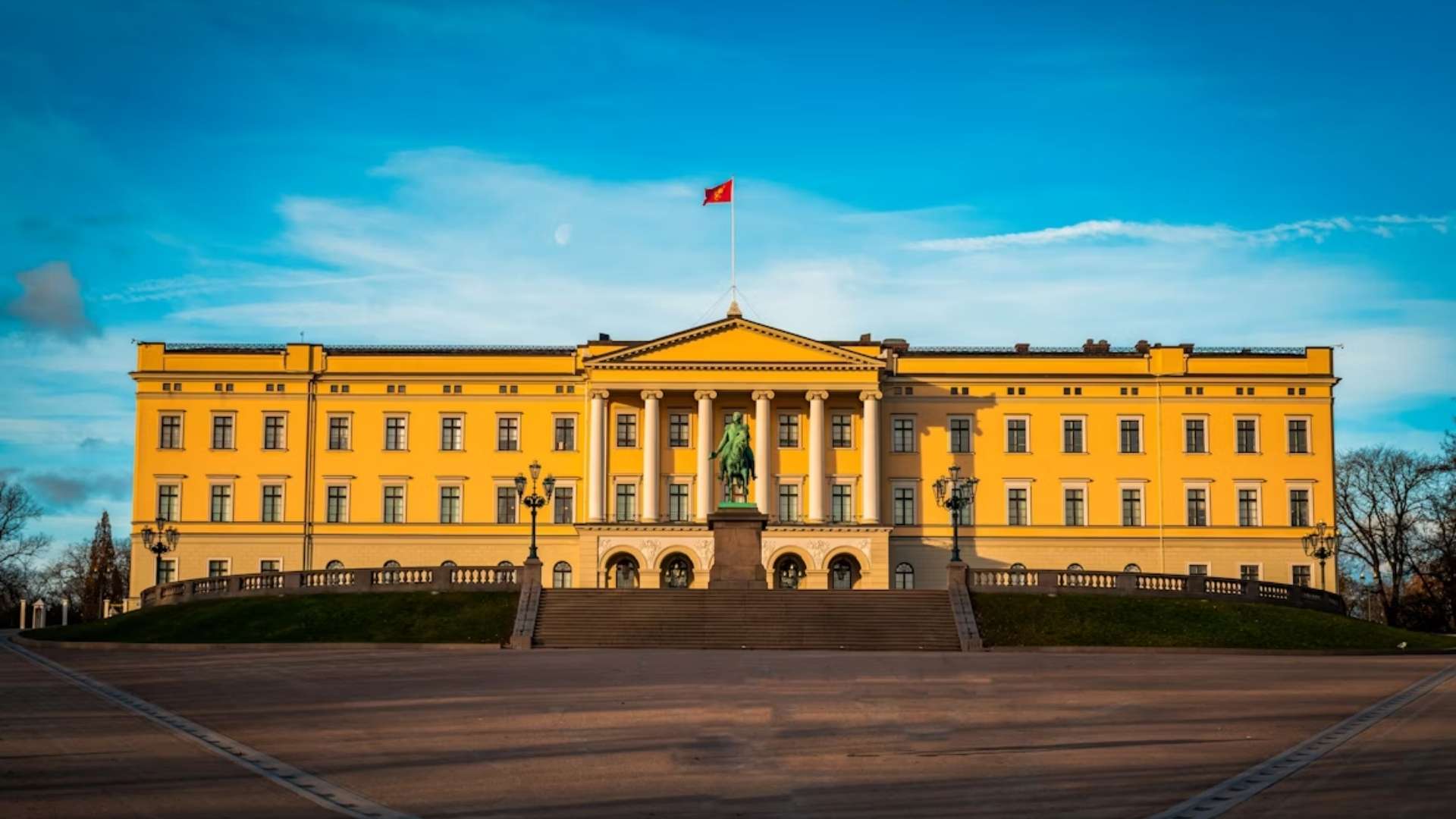
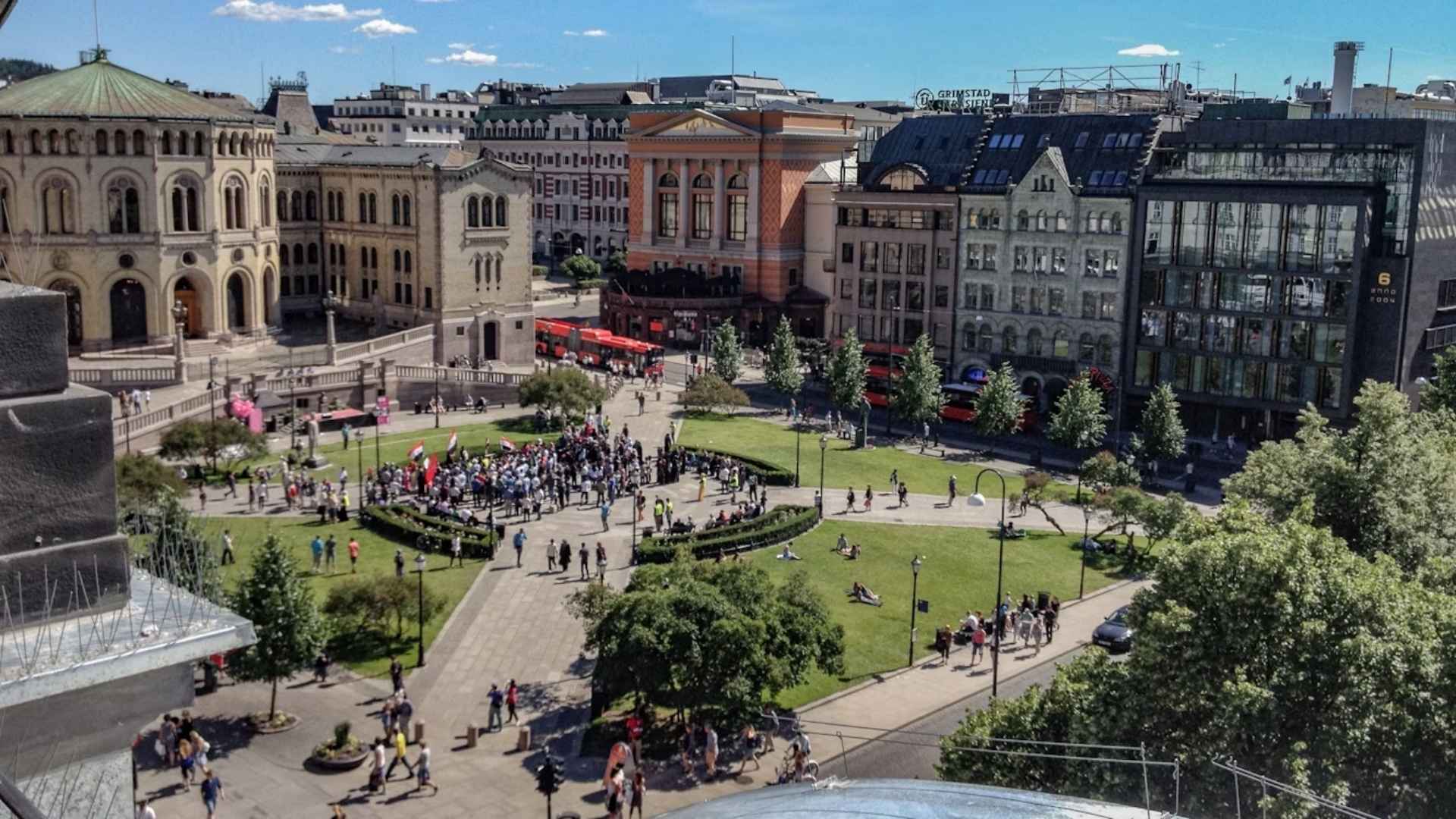
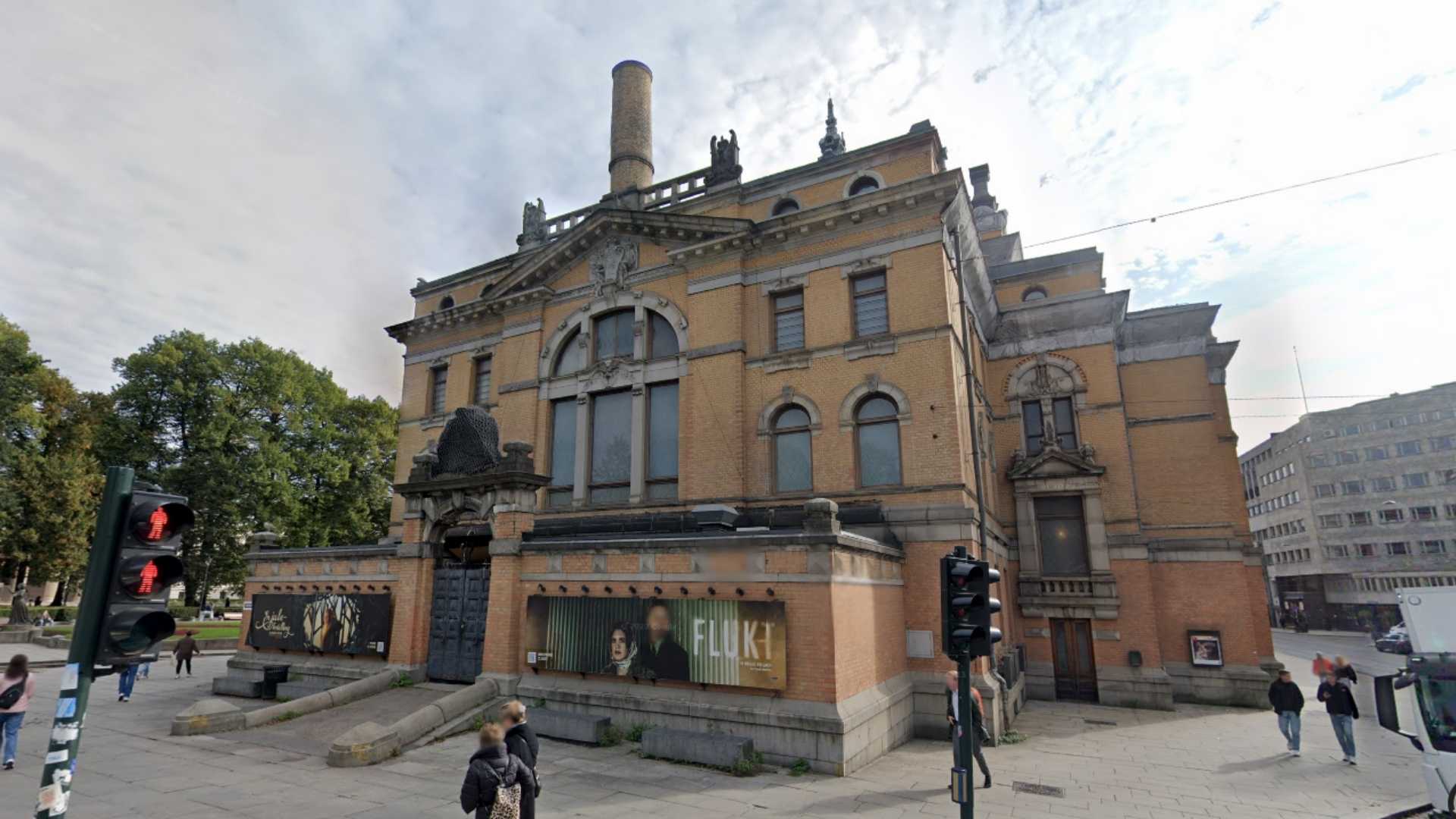
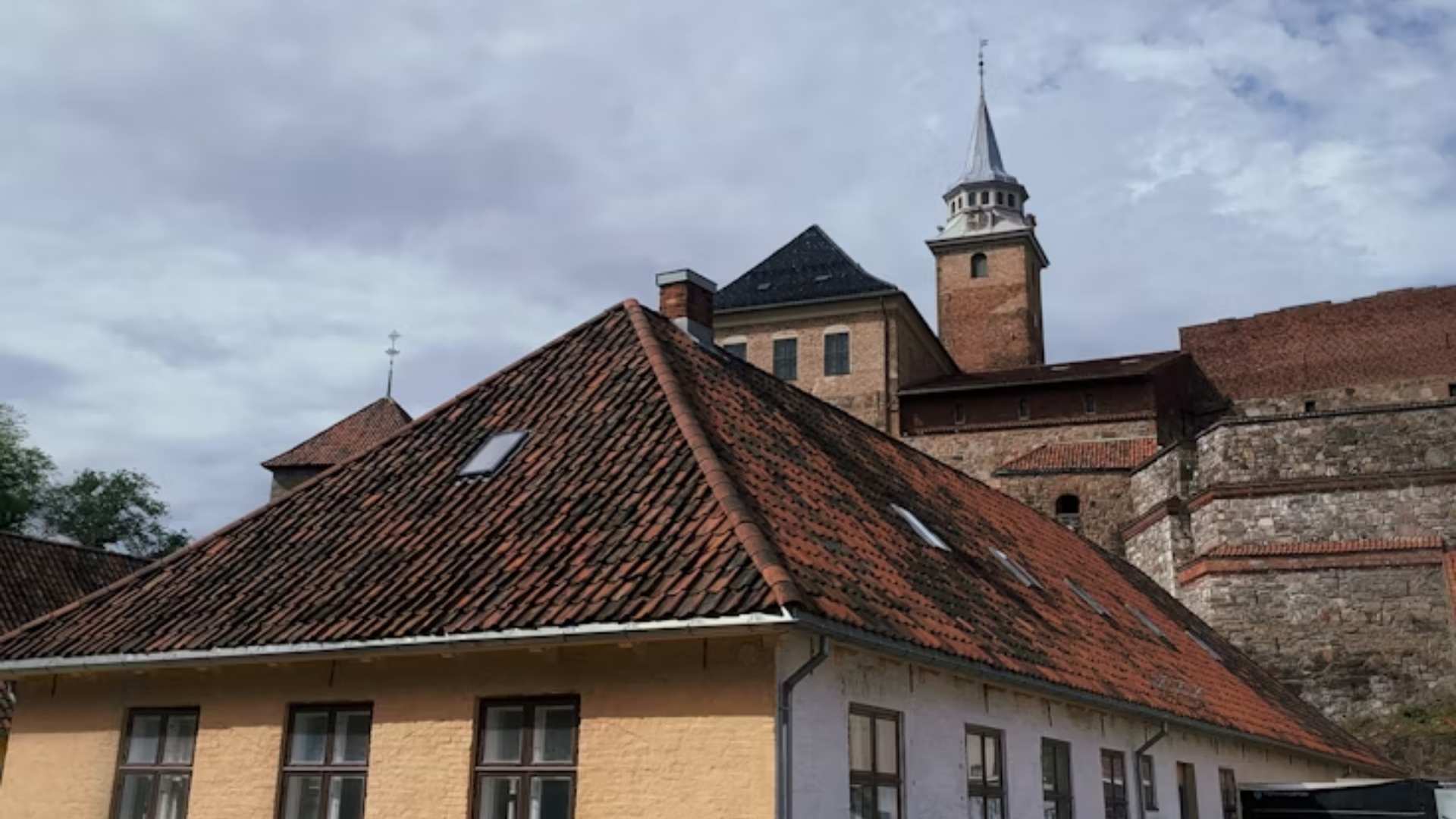
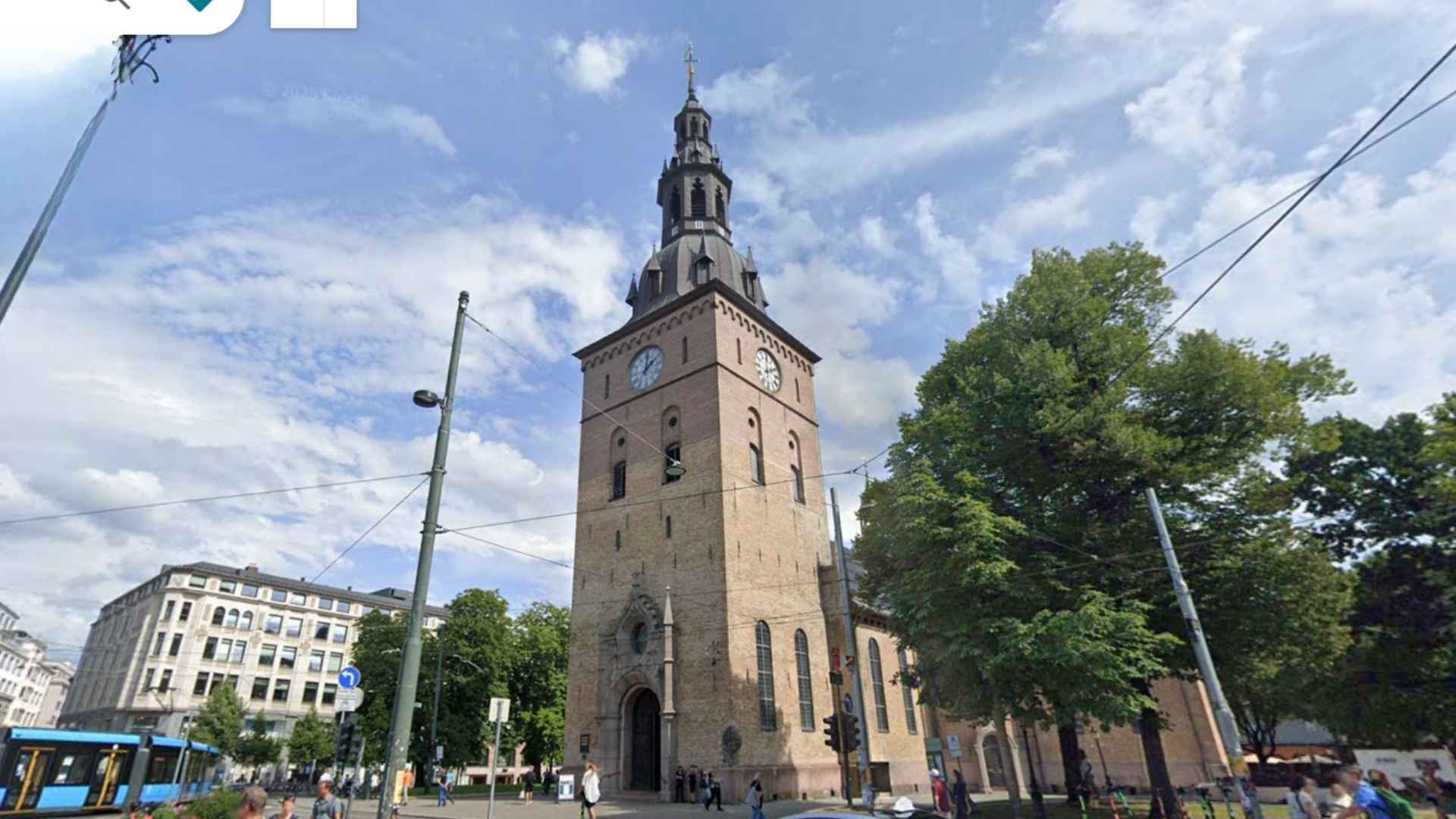
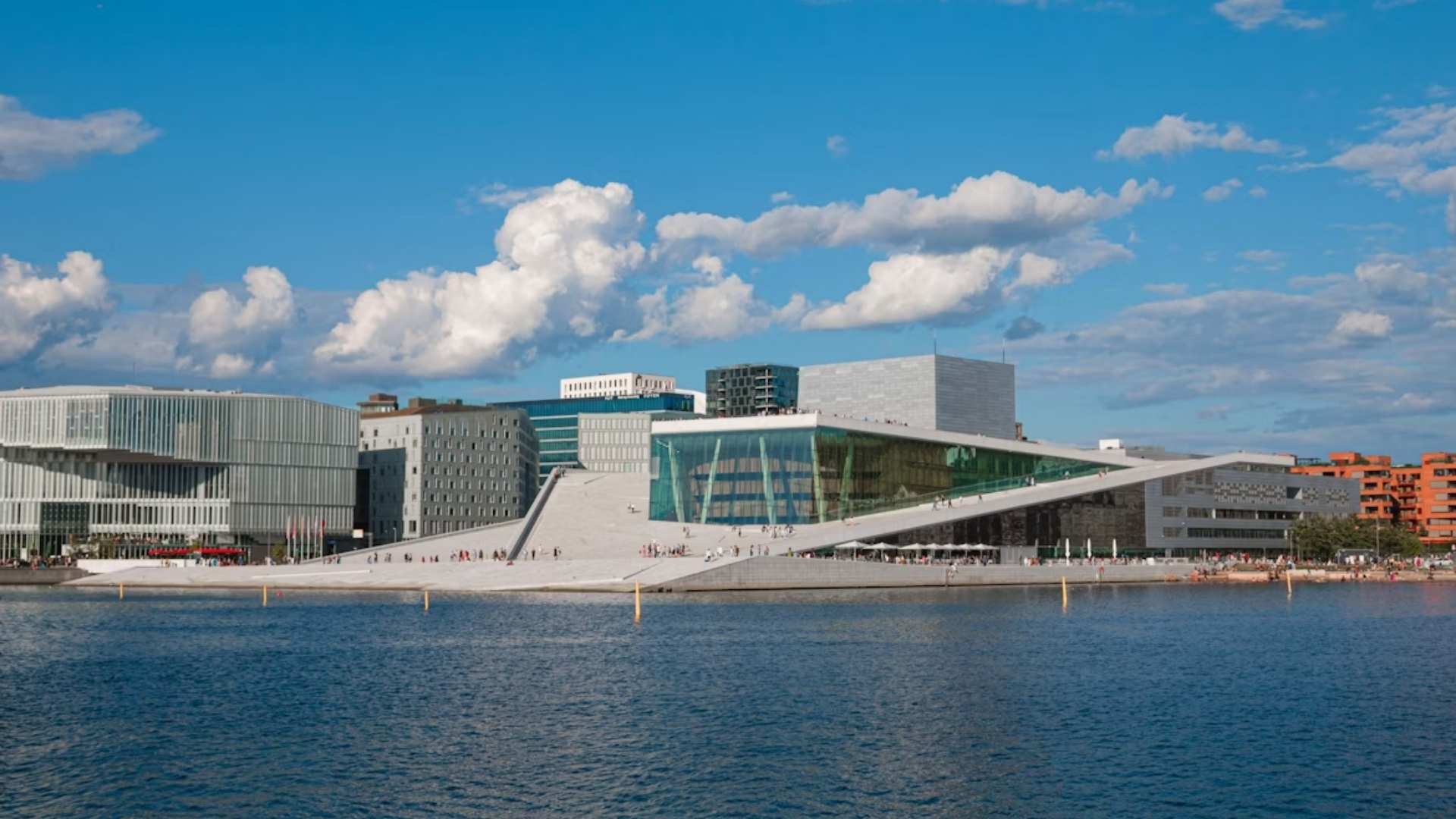
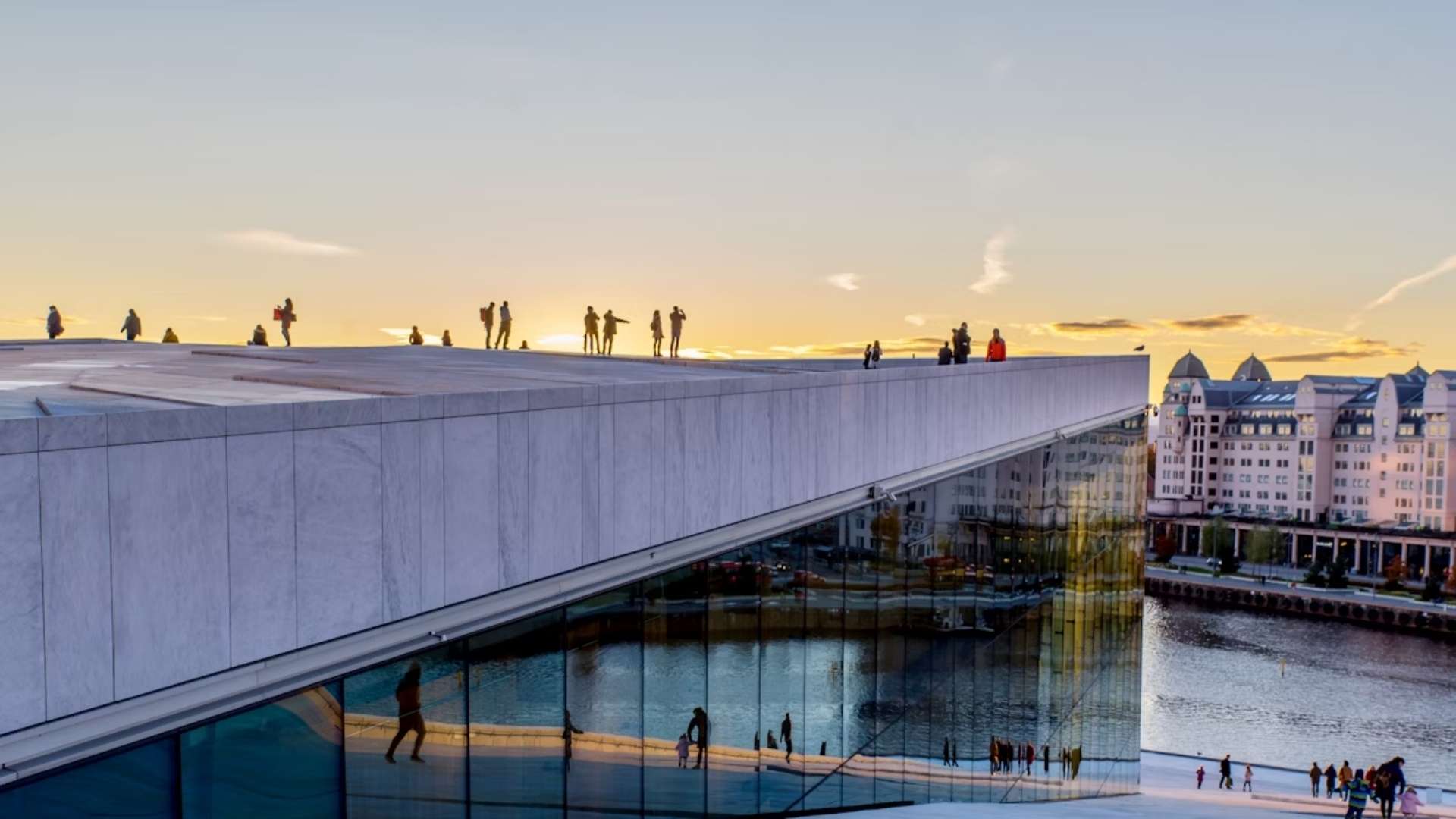
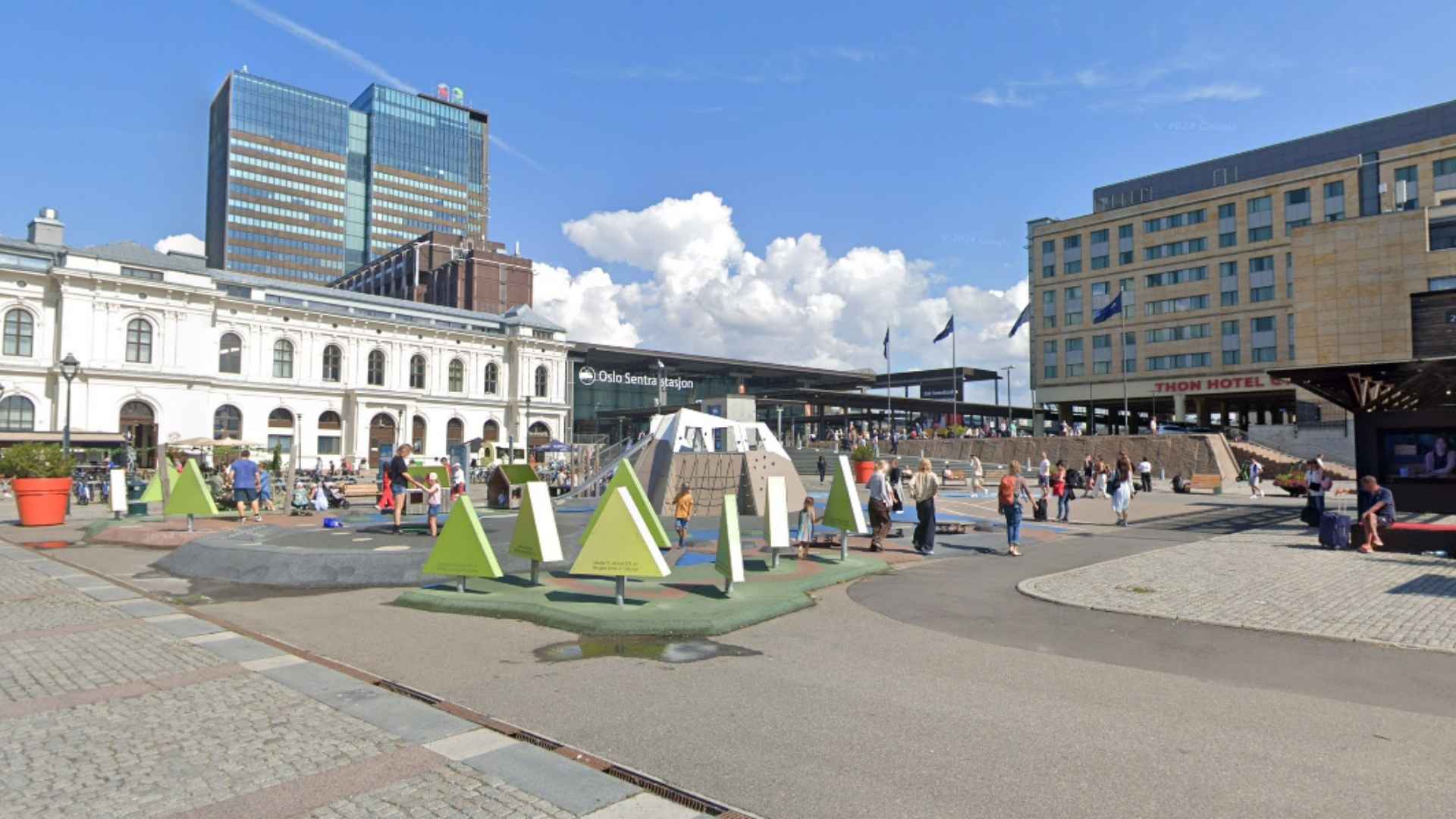
.avif)





